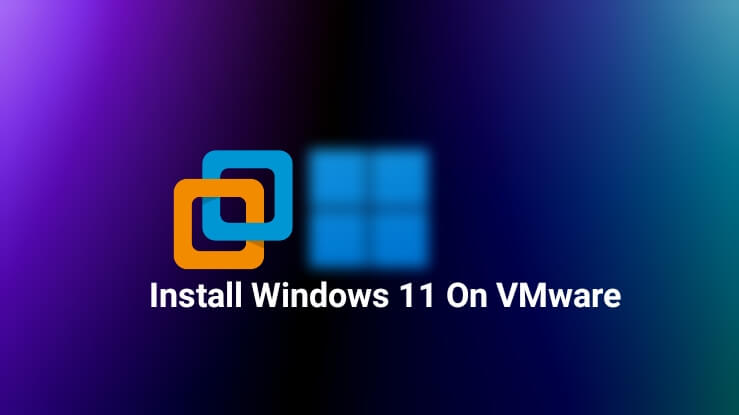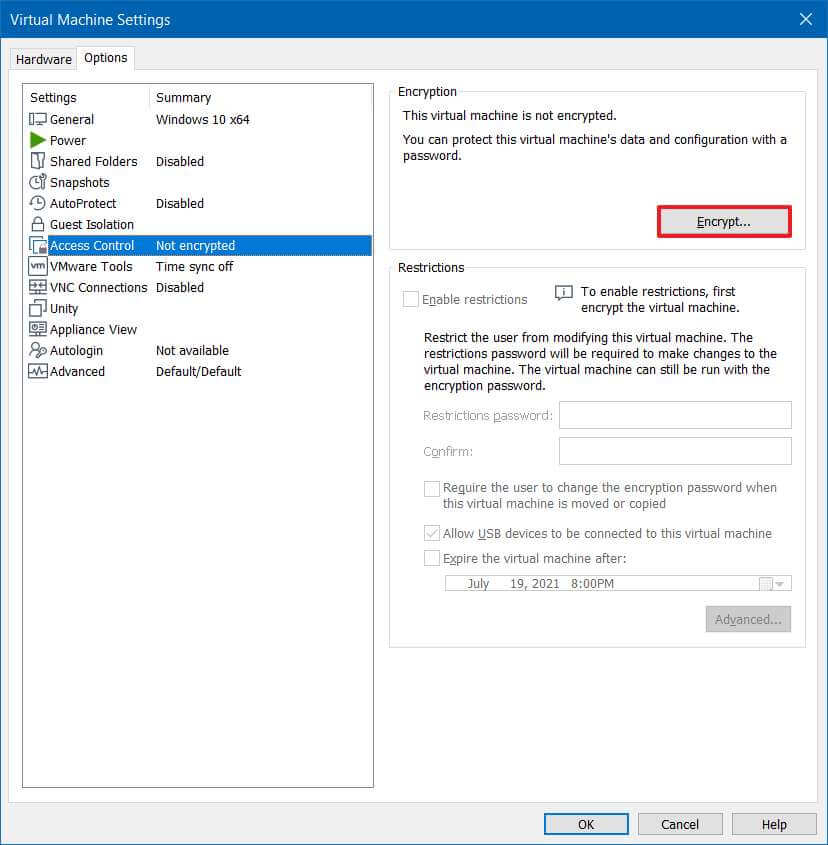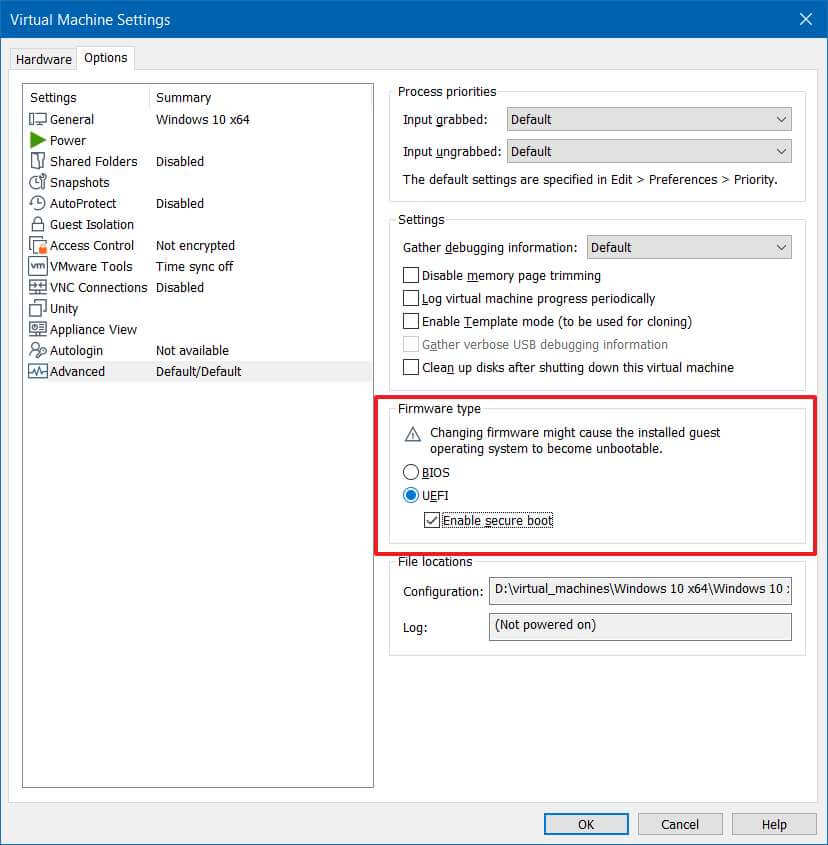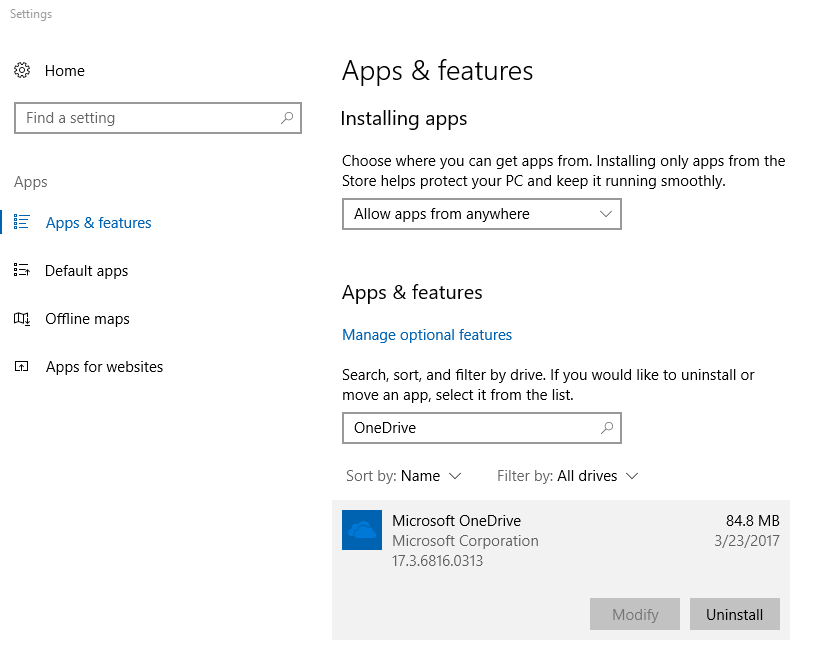
Windows 11 has more security requirements than previous versions of Windows. The main requirements are the use of a TPM 2.0 chip (TPM 2.0 can be enabled in your BIOS if you have current hardware) and Secure Boot. If you want to try Windows 11, you can install it as a virtual machine using virtualization software like VMware Workstation.
VMware Requirements
According to VMware’s documentation, this feature requires VMware Workstation Pro 14.0 or higher and a minimum hardware version of 14 that uses the UEFI firmware type. The other hardware minimum requirements for Windows 11 include 4GB RAM and a 64GB hard drive.
Enable UEFI and Secure Boot in VMware Workstation
- Open VMware Workstation and select your Virtual Machine (or create one)
- Go to the VM Menu and select Settings, then go to the Options tab and Access Control:

- Click on the Encrypt button in the Encryption section, then create an encryption password
- Click on Advanced and under Firmware Type, select UEFI and Enable Secure Boot
Add TPM in VMware Workstation
- Go to the Hardware tab in your Virtual Machine Settings and click Add:

- Select Trusted Platform Module
- Click Finish and OK
This should complete the steps needed to add the hardware requirements for Windows 11 to be able to install it as a virtual machine in VMware Workstation Pro. You’ll want to set the other minimum hardware requirements such as disk space, memory and CPUs. From here, you’ll need to download the Windows 11 ISO and mount it and go through the setup process.
Microsoft now offers a way to Bypass TPM 2.0 and CPU Requirements to Install Windows 11 if you currently have Windows 10 in your virtual machine and want to upgrade it to Windows 11.




